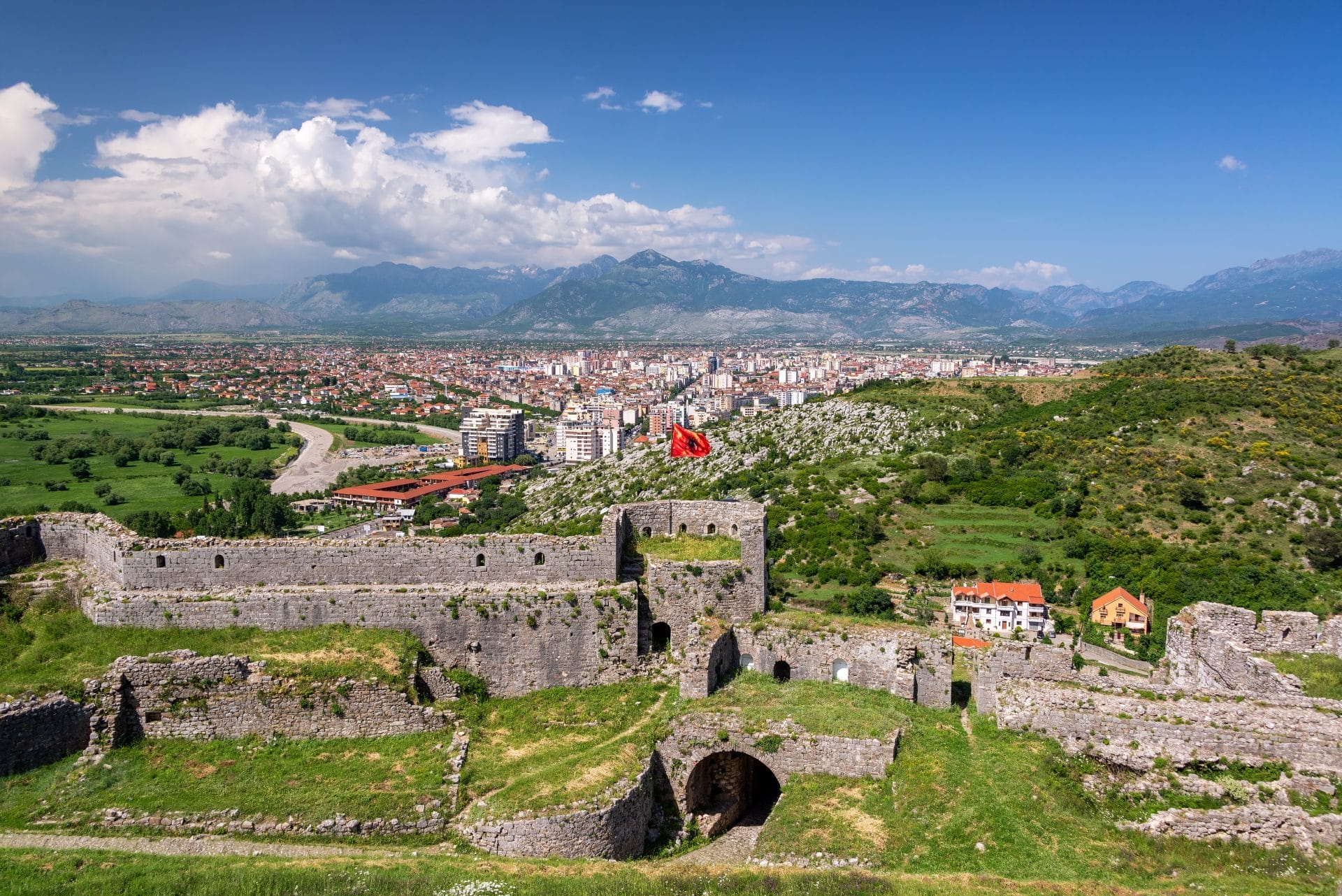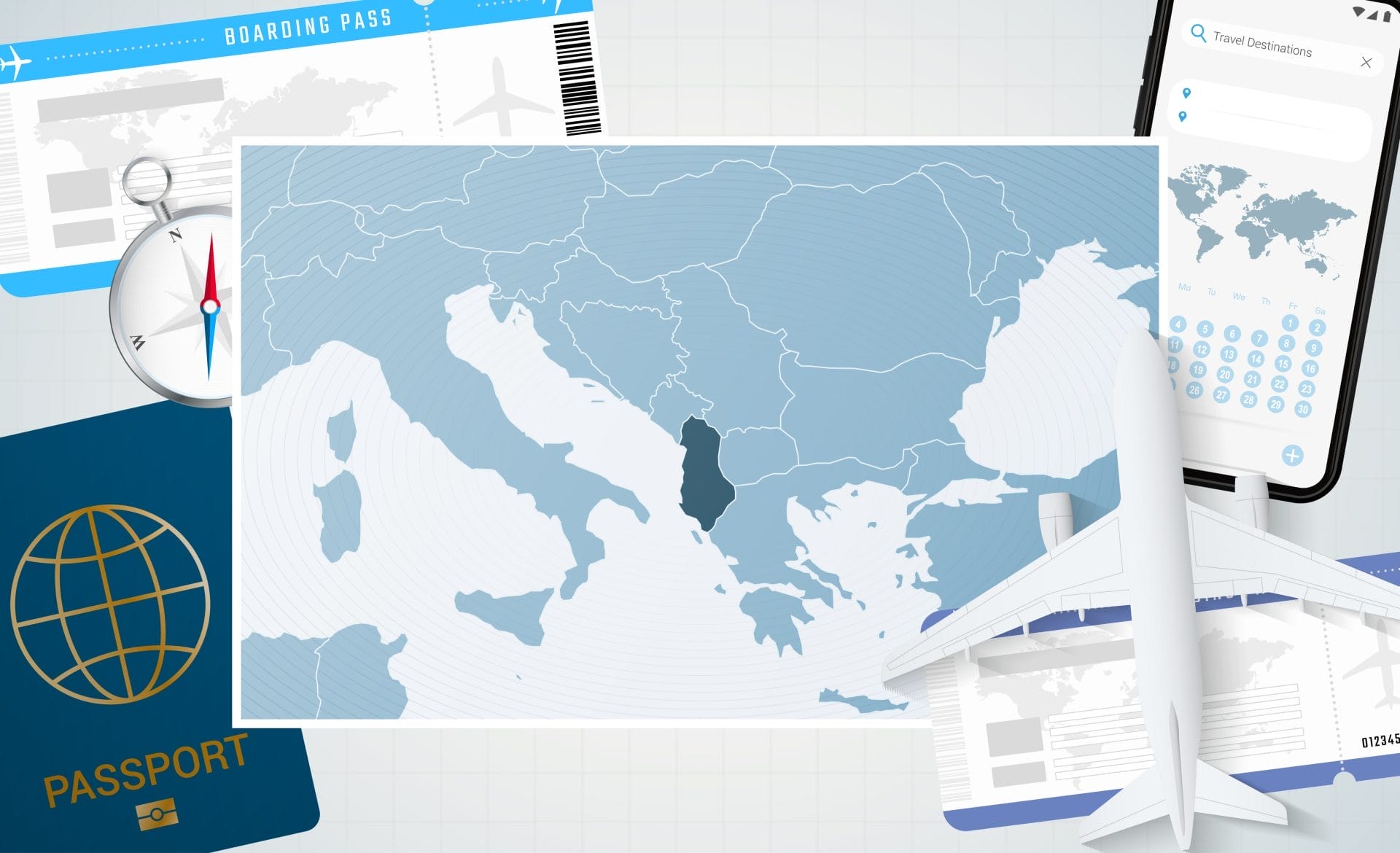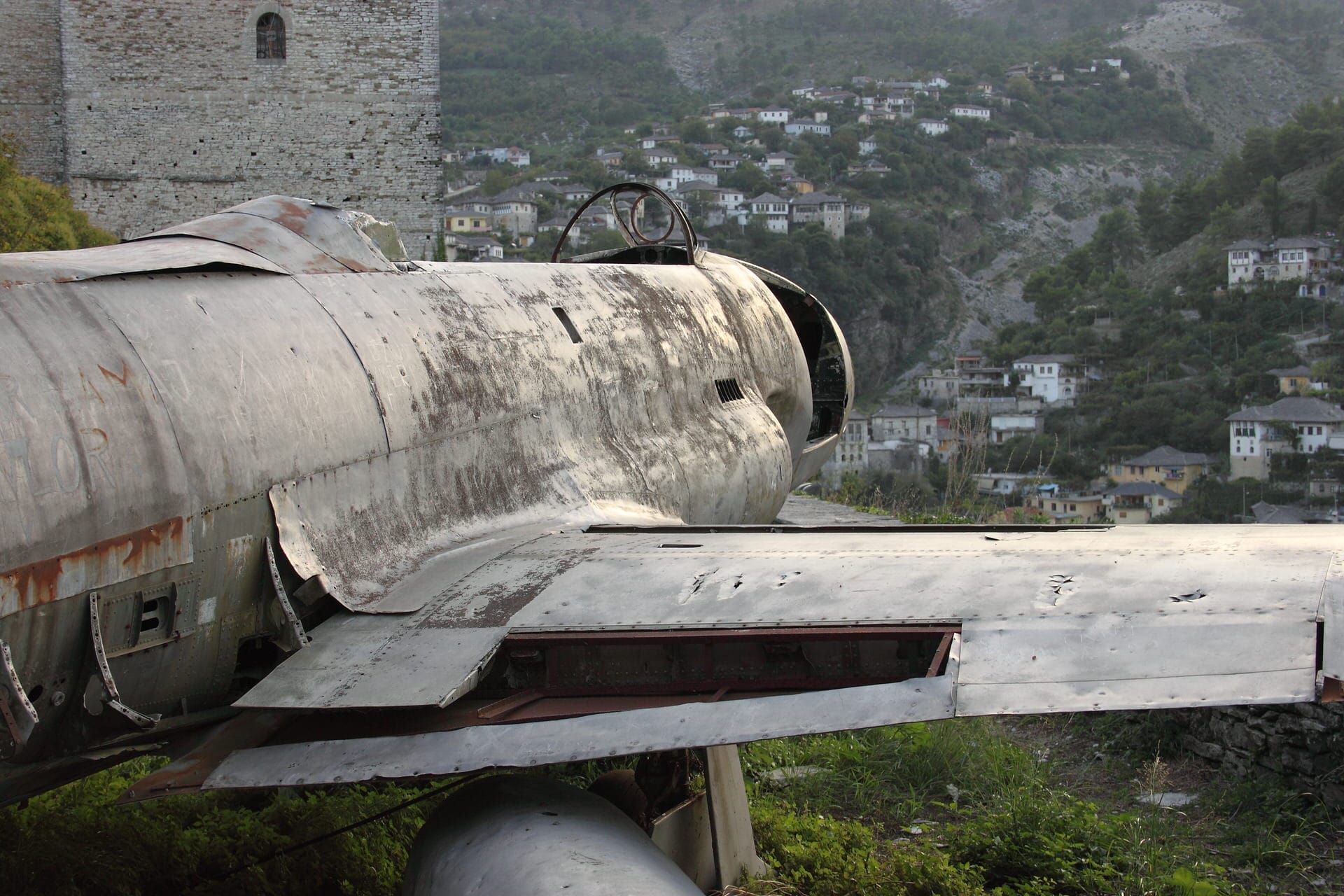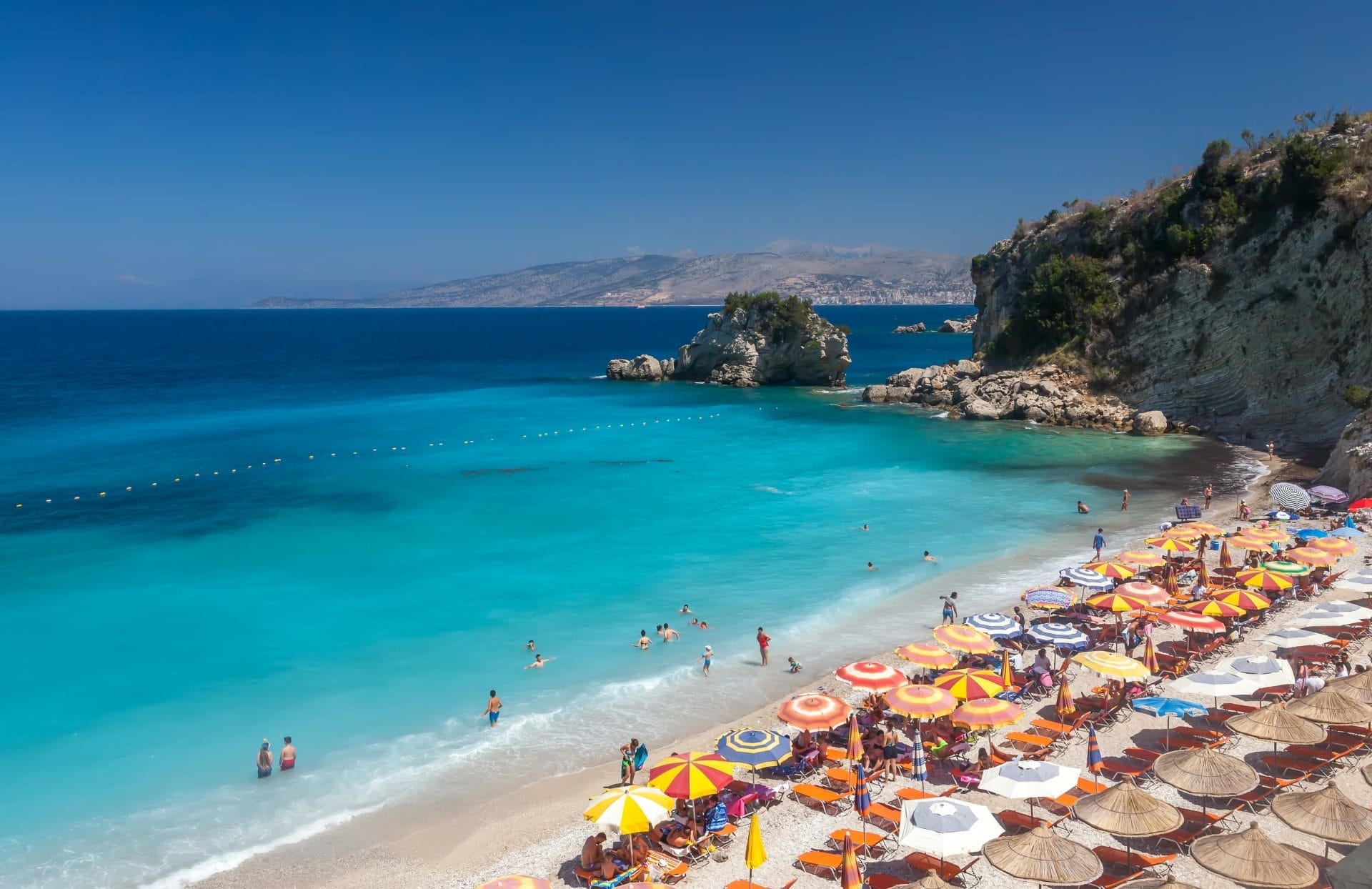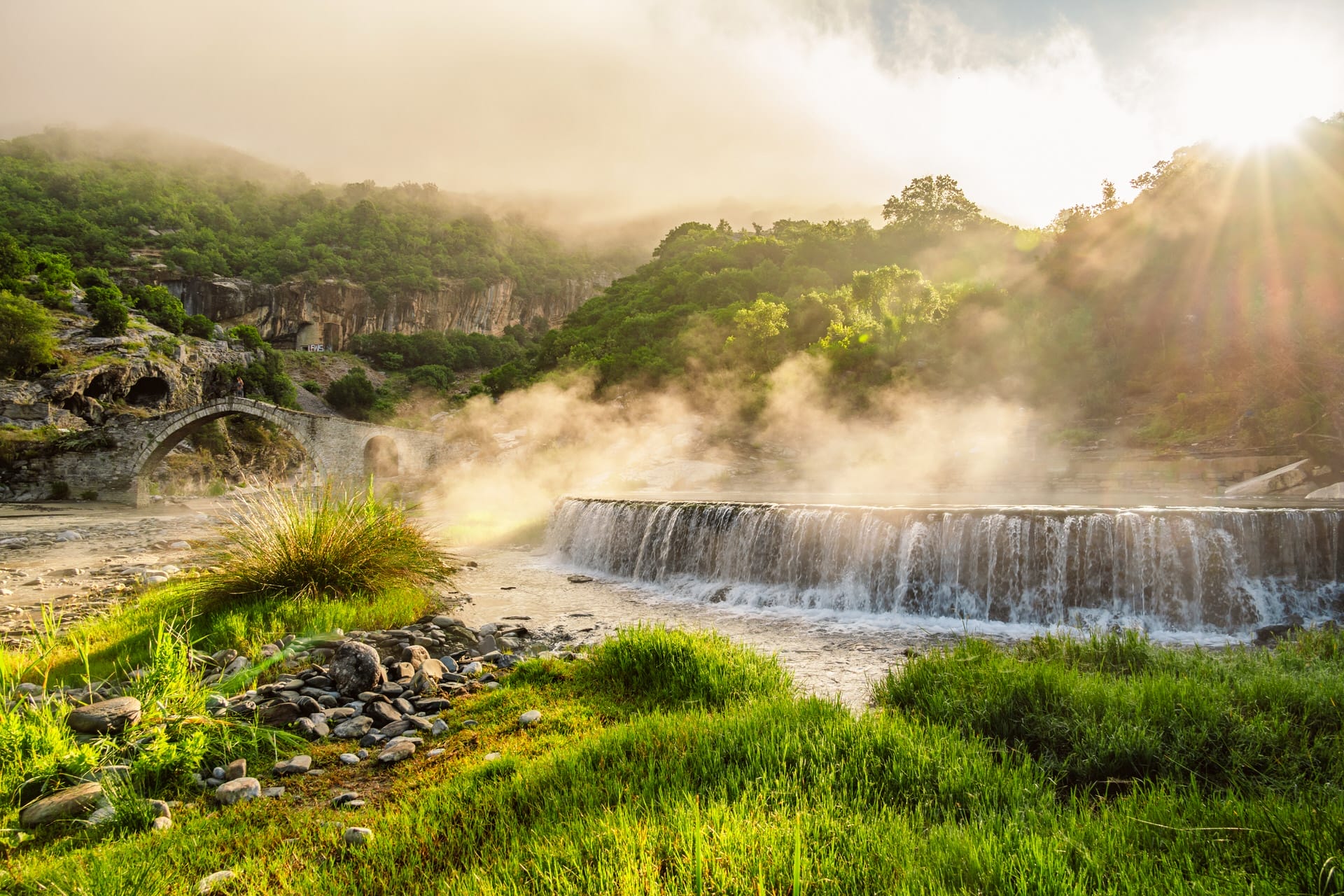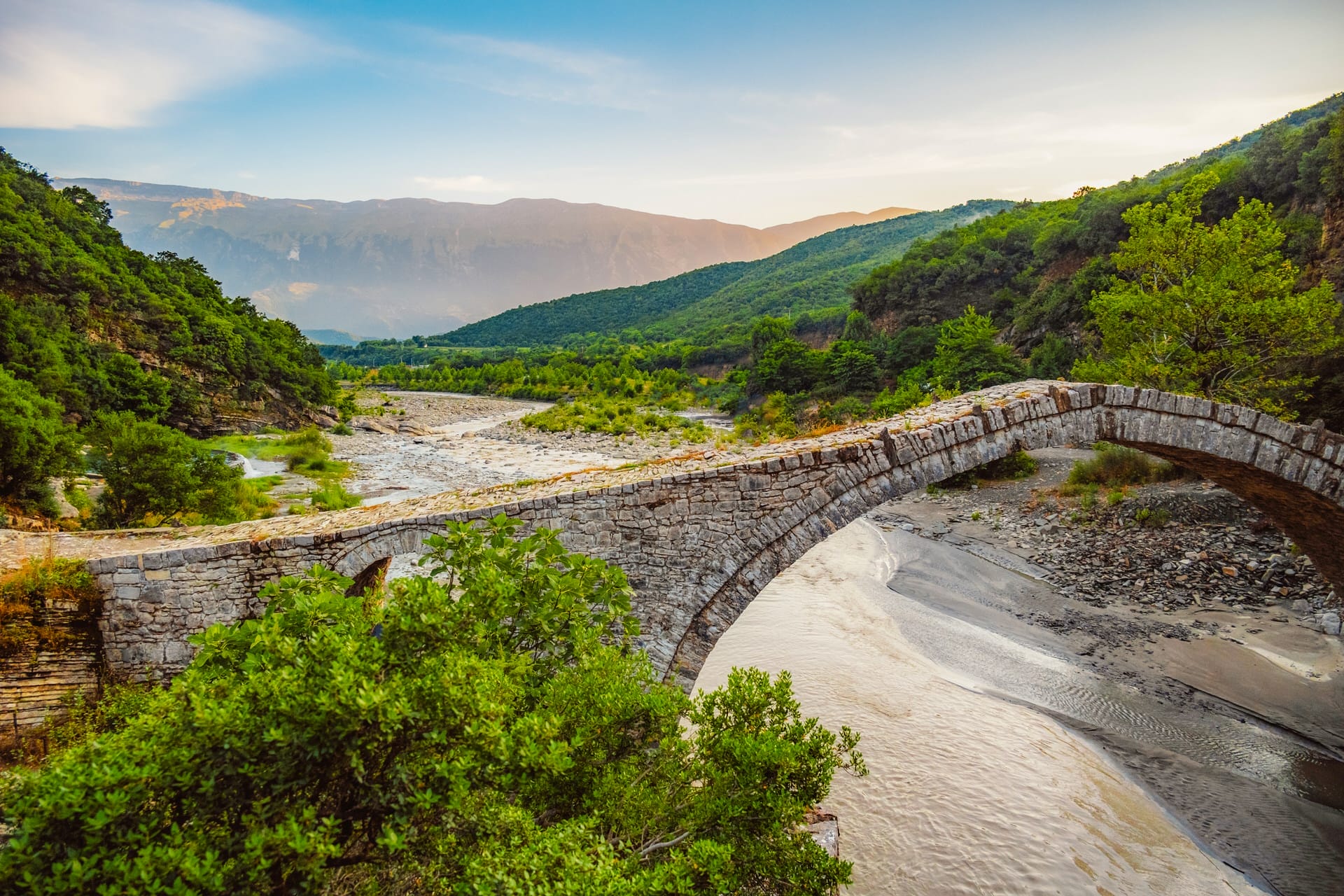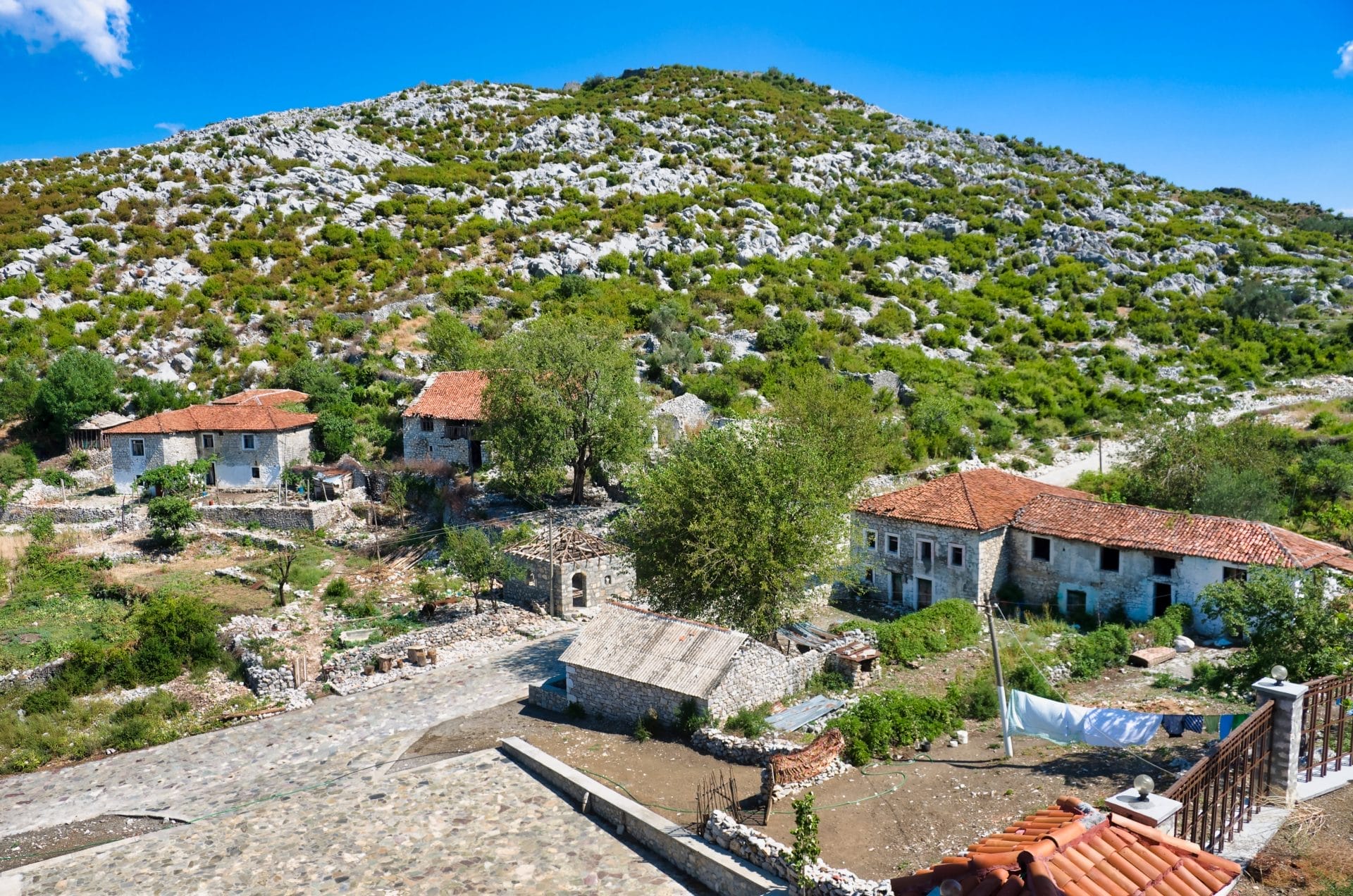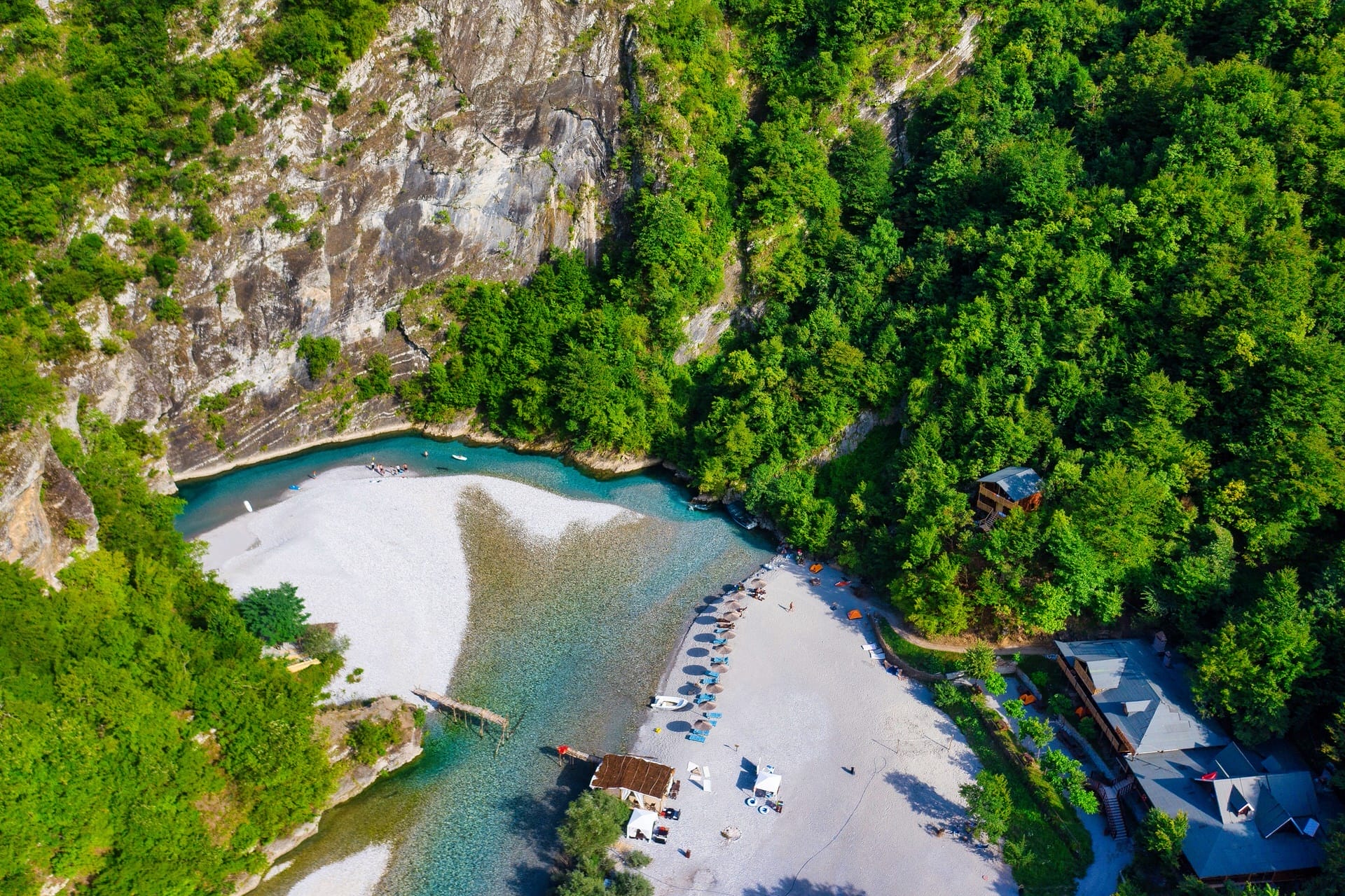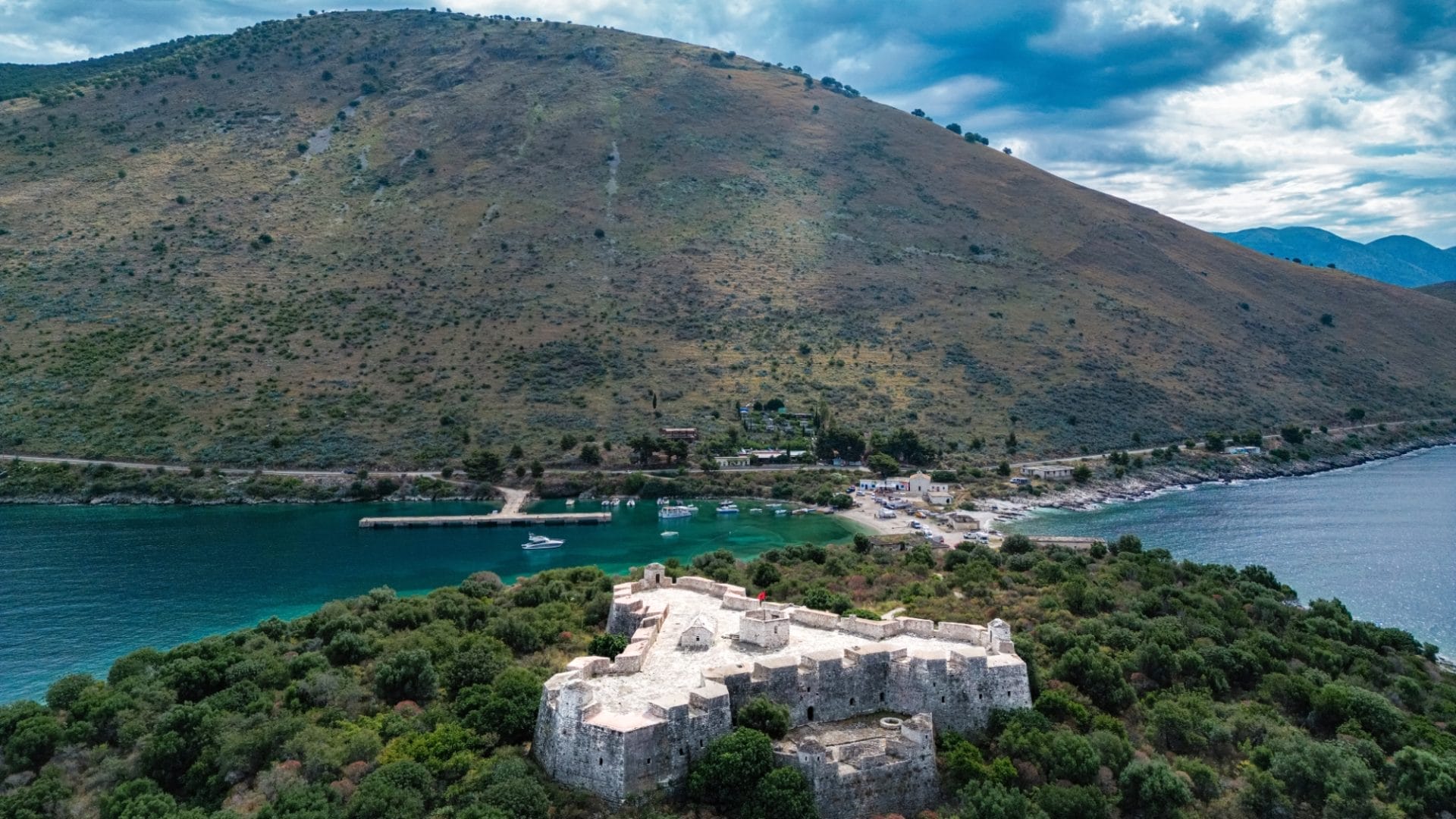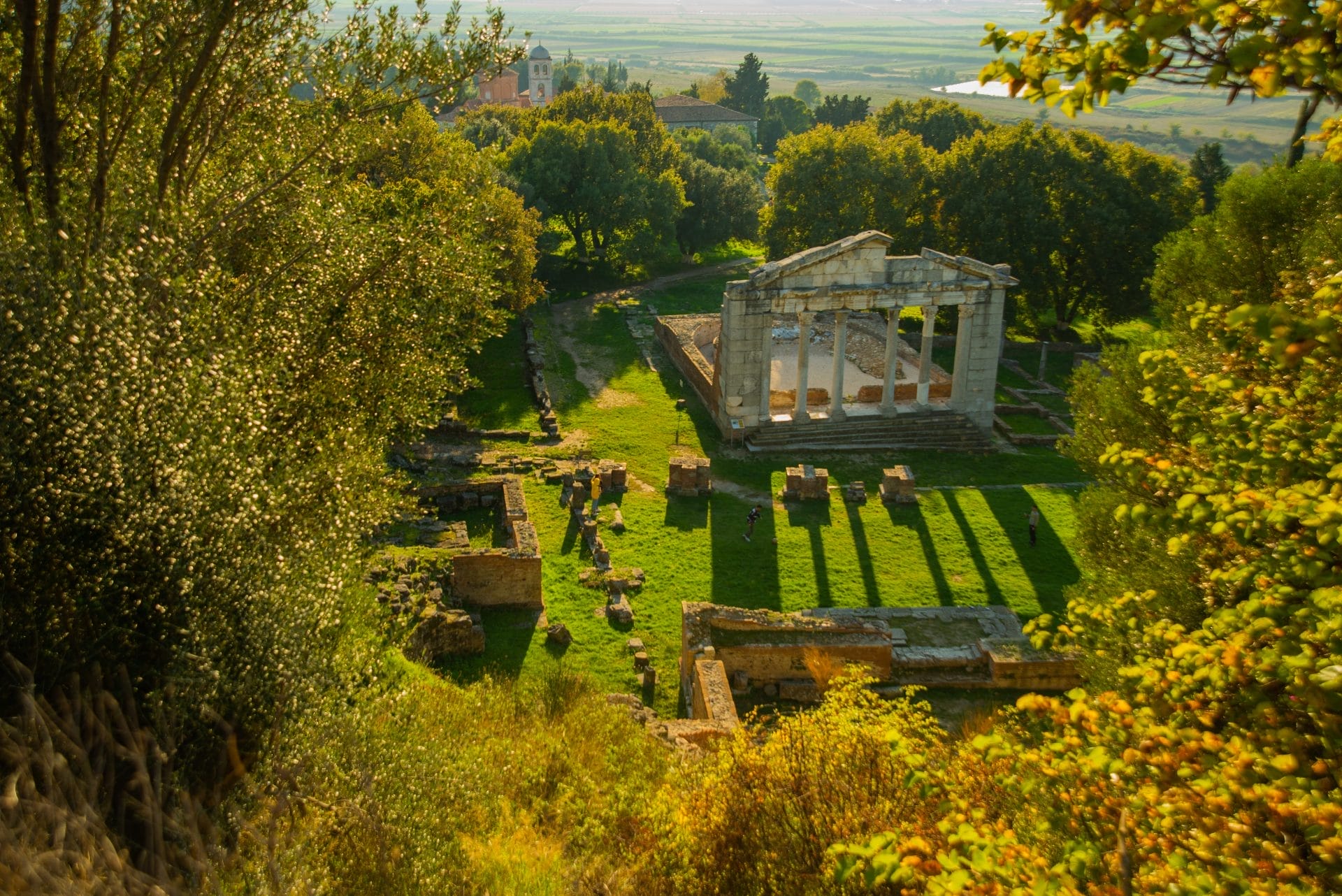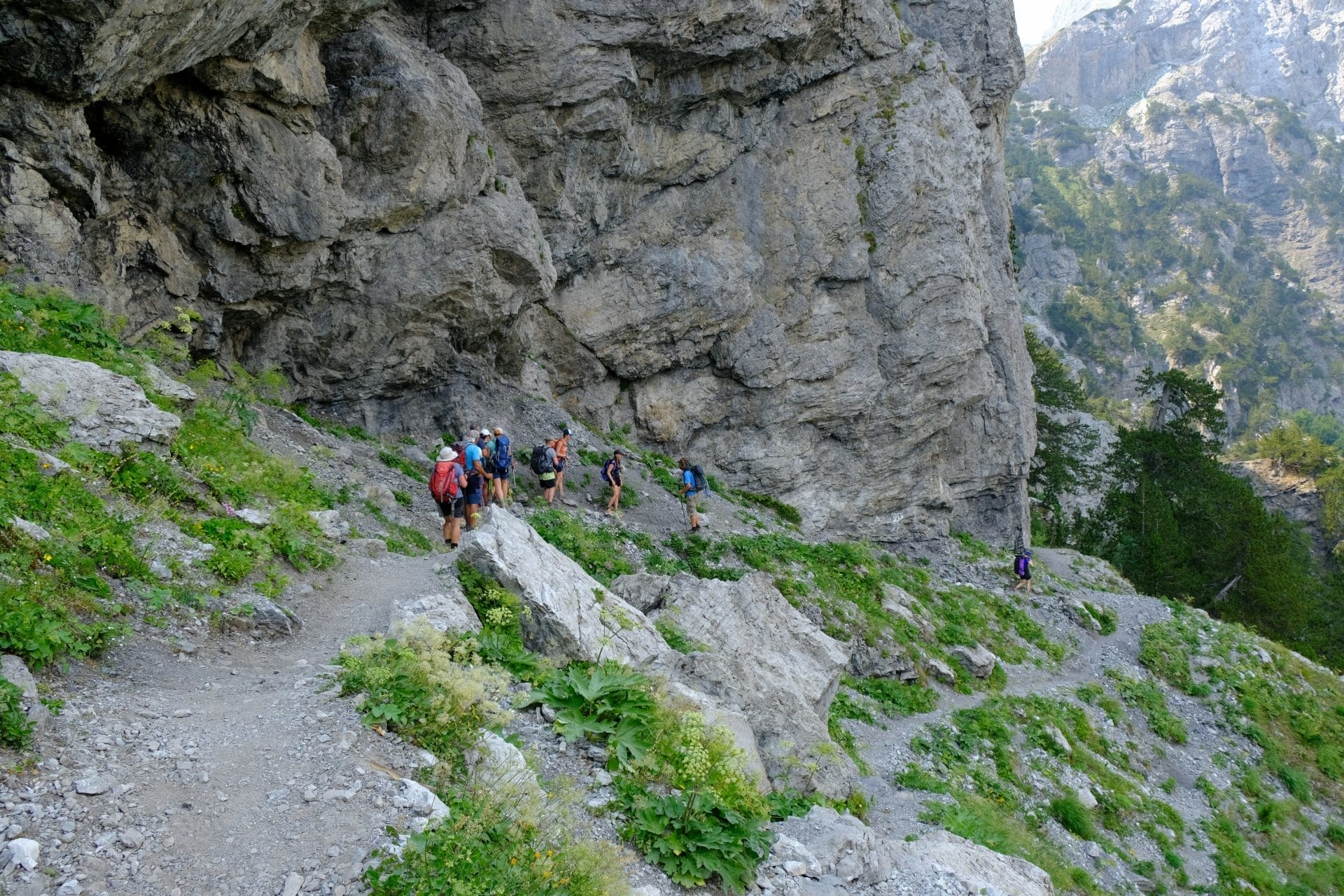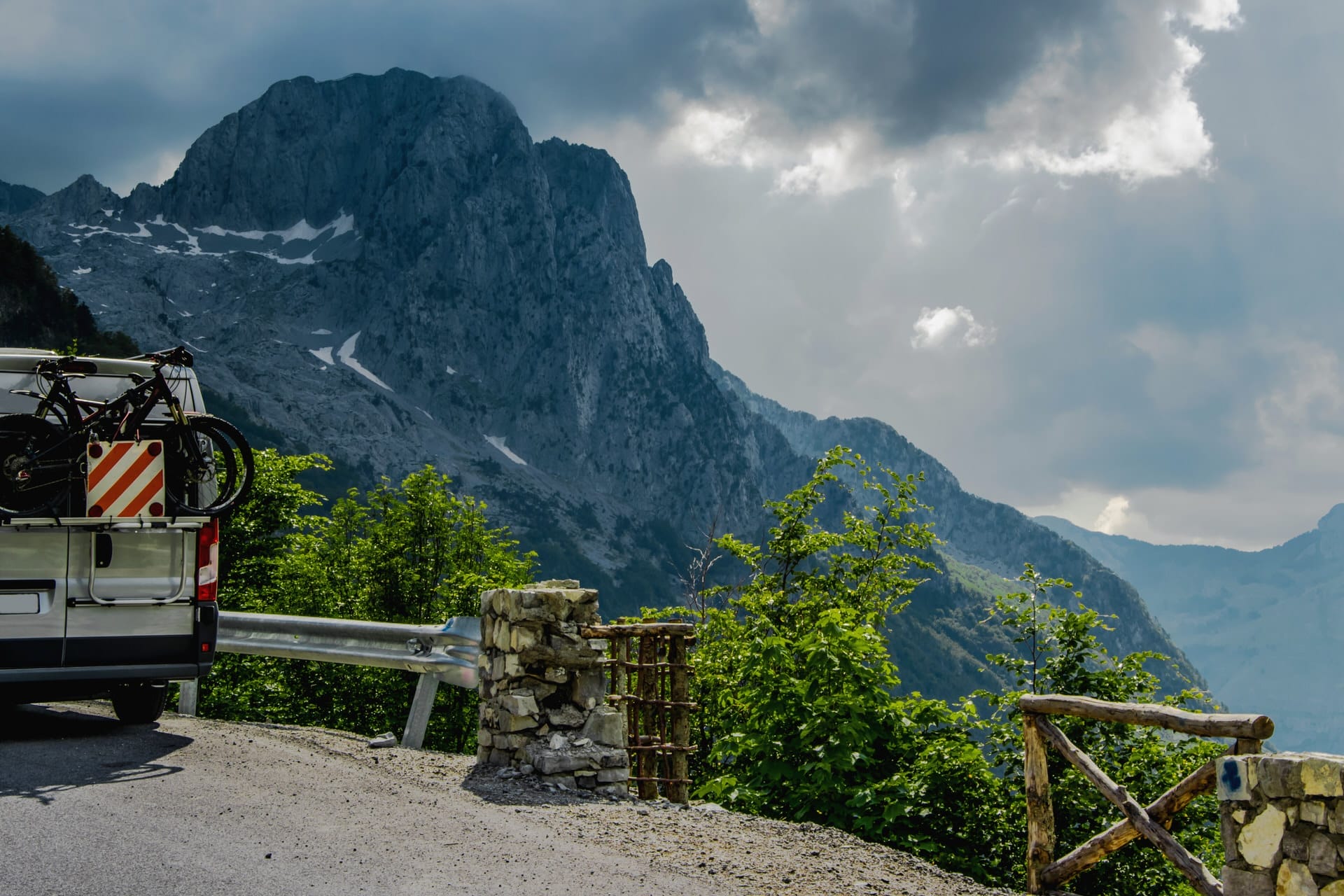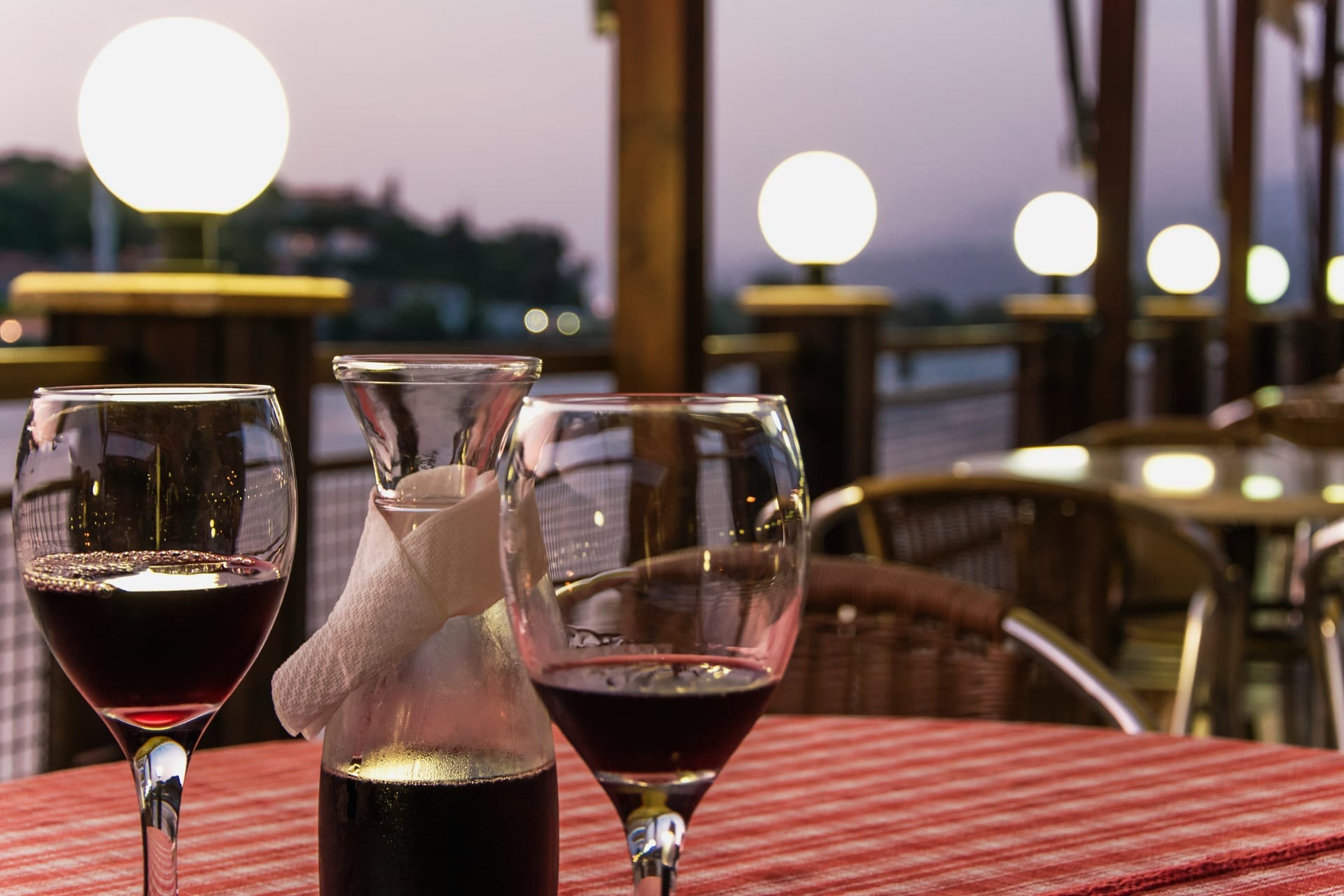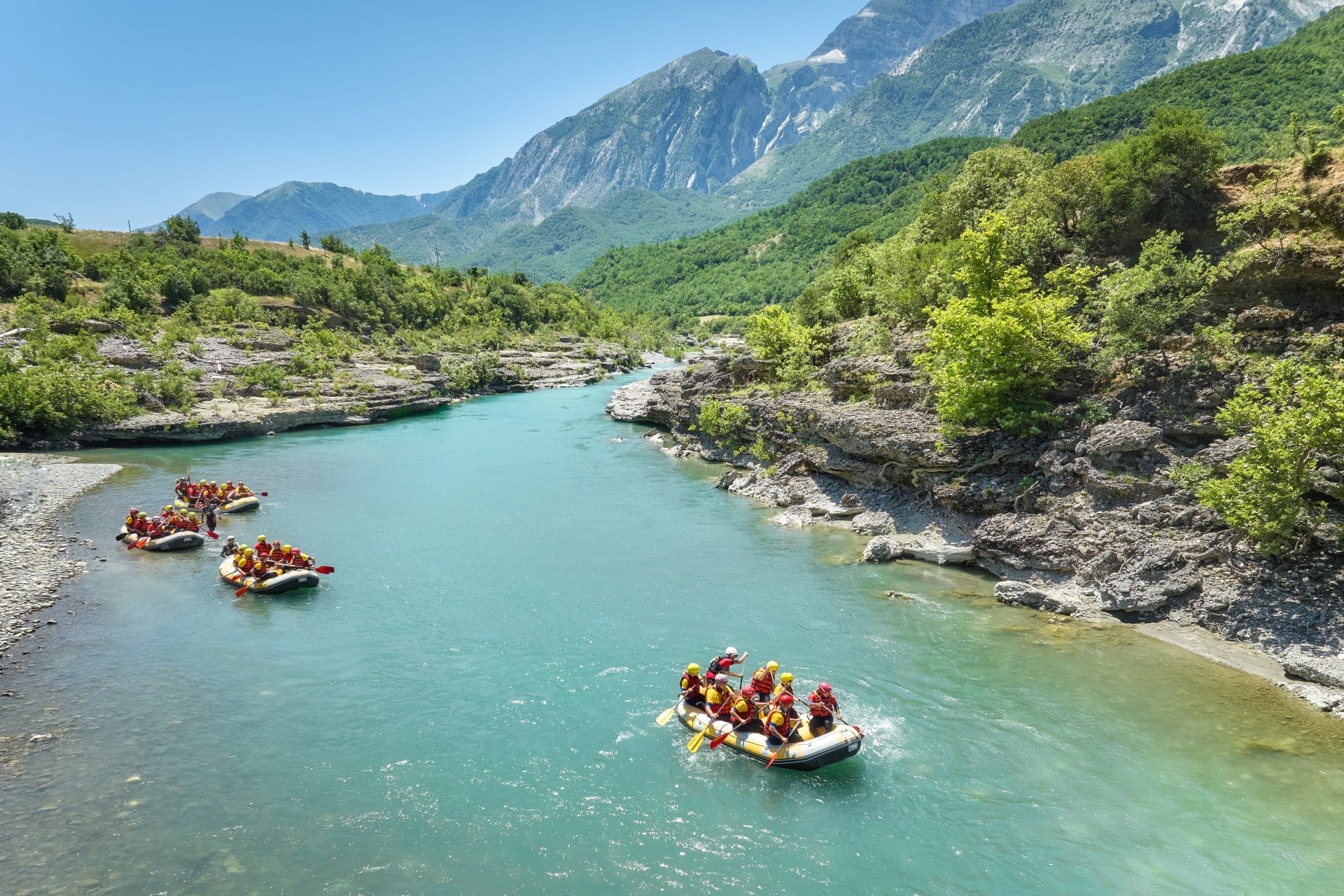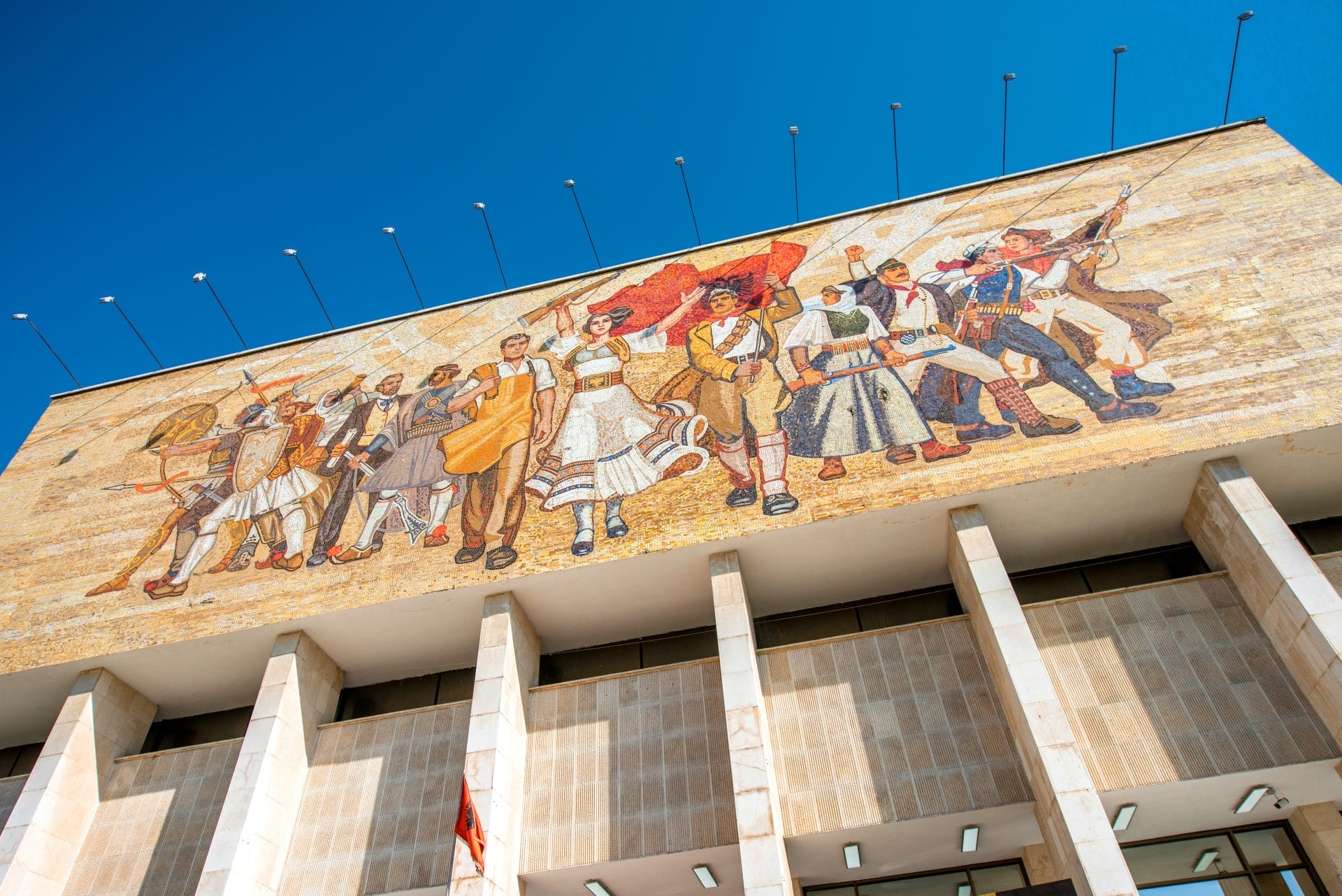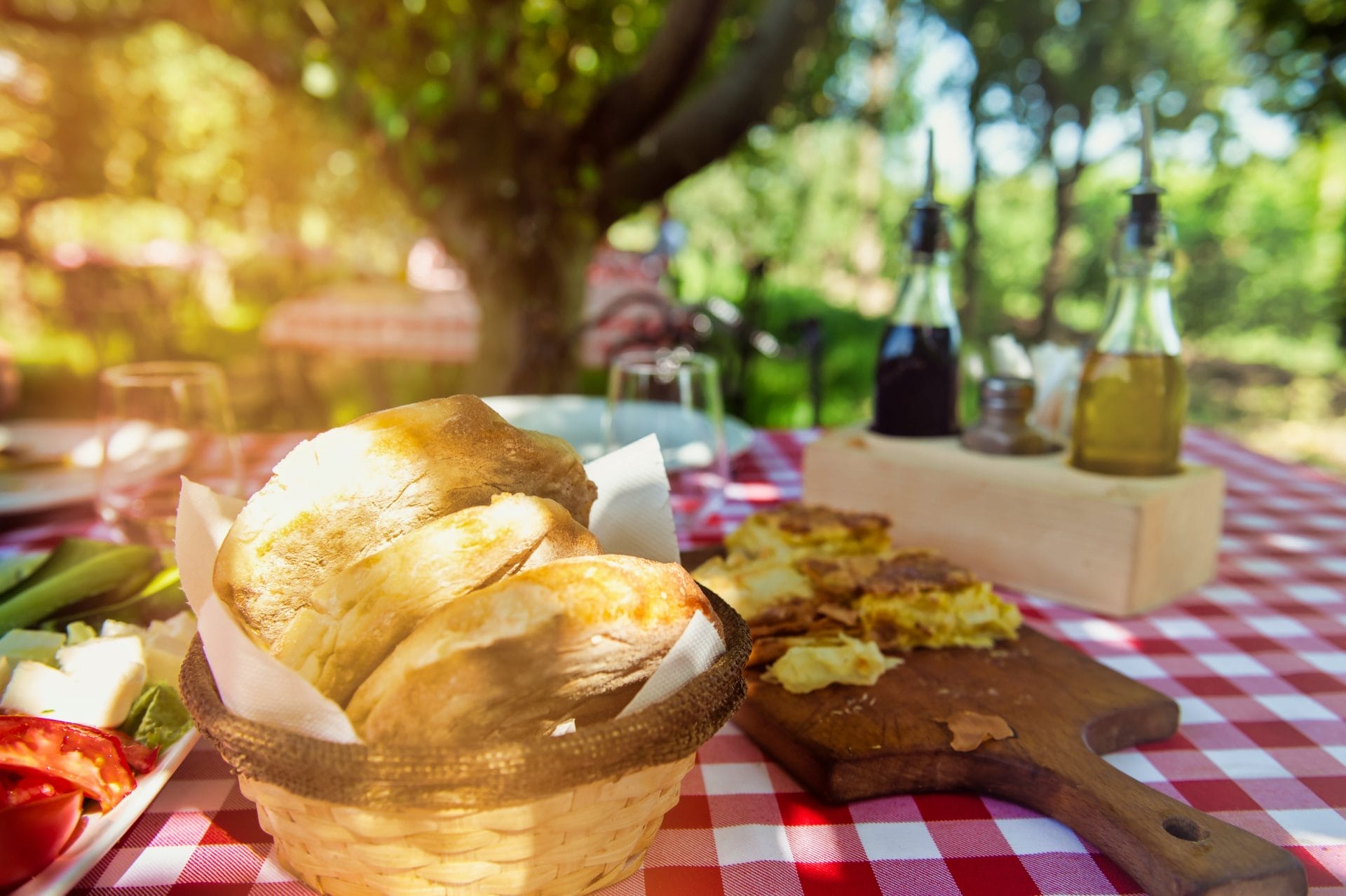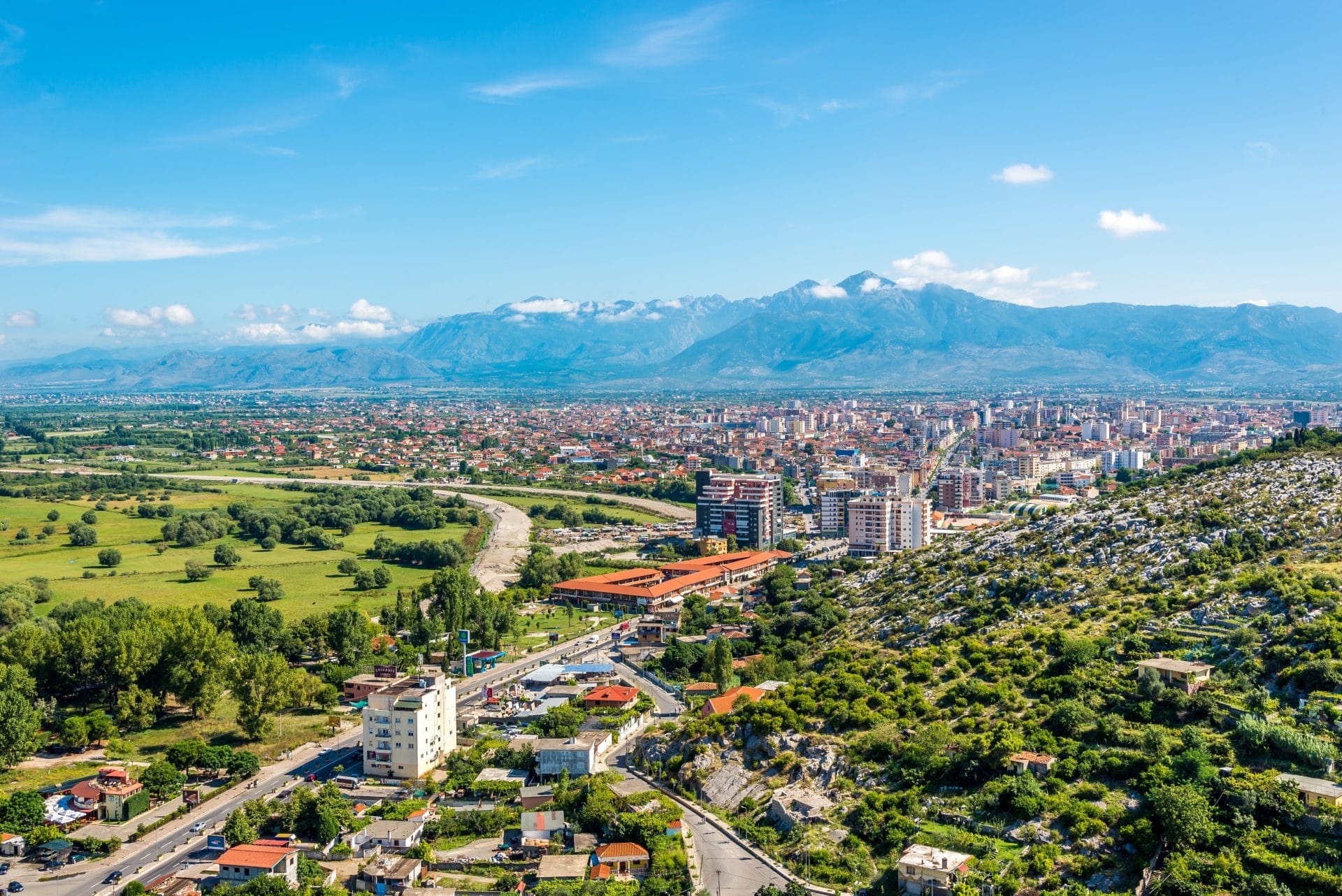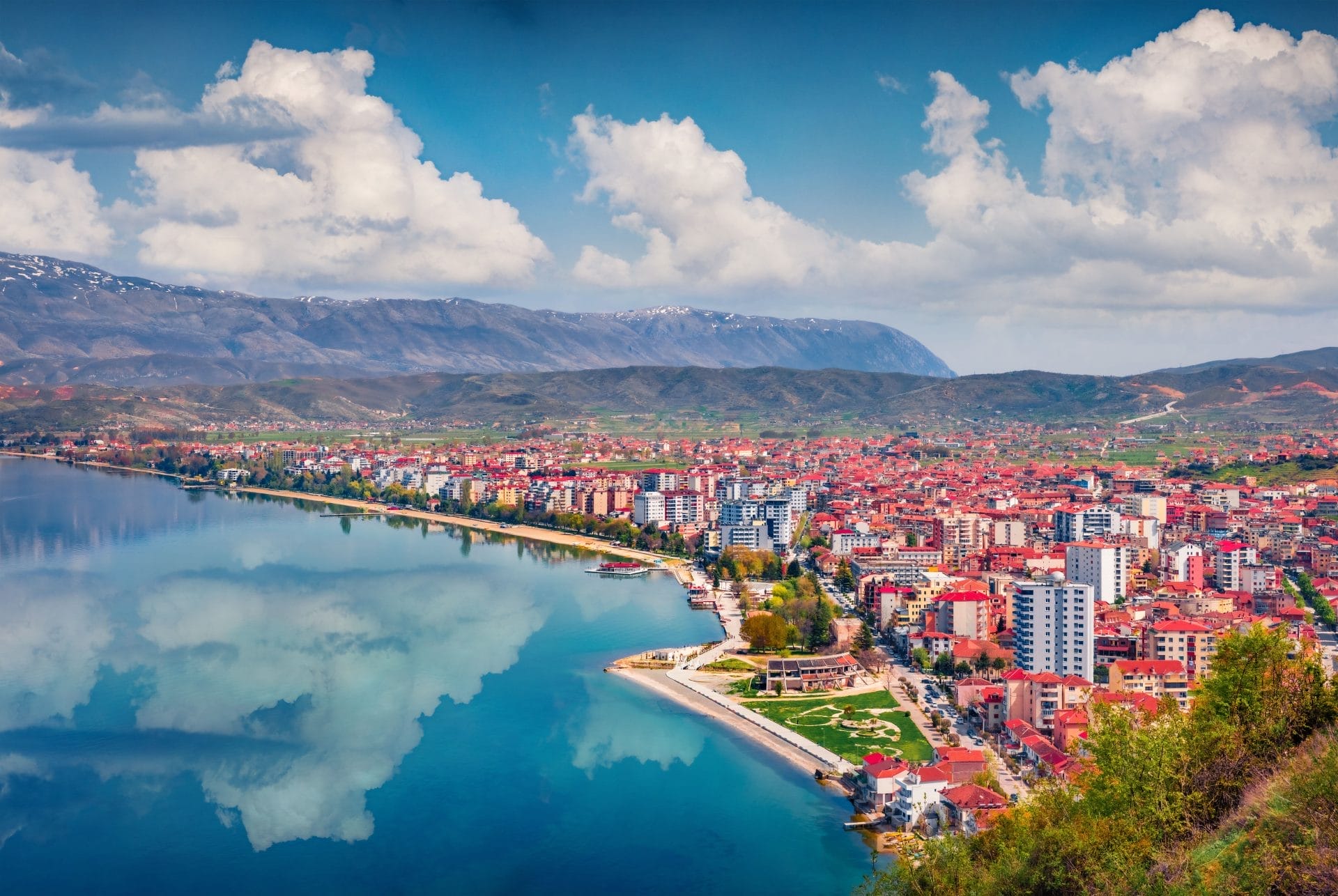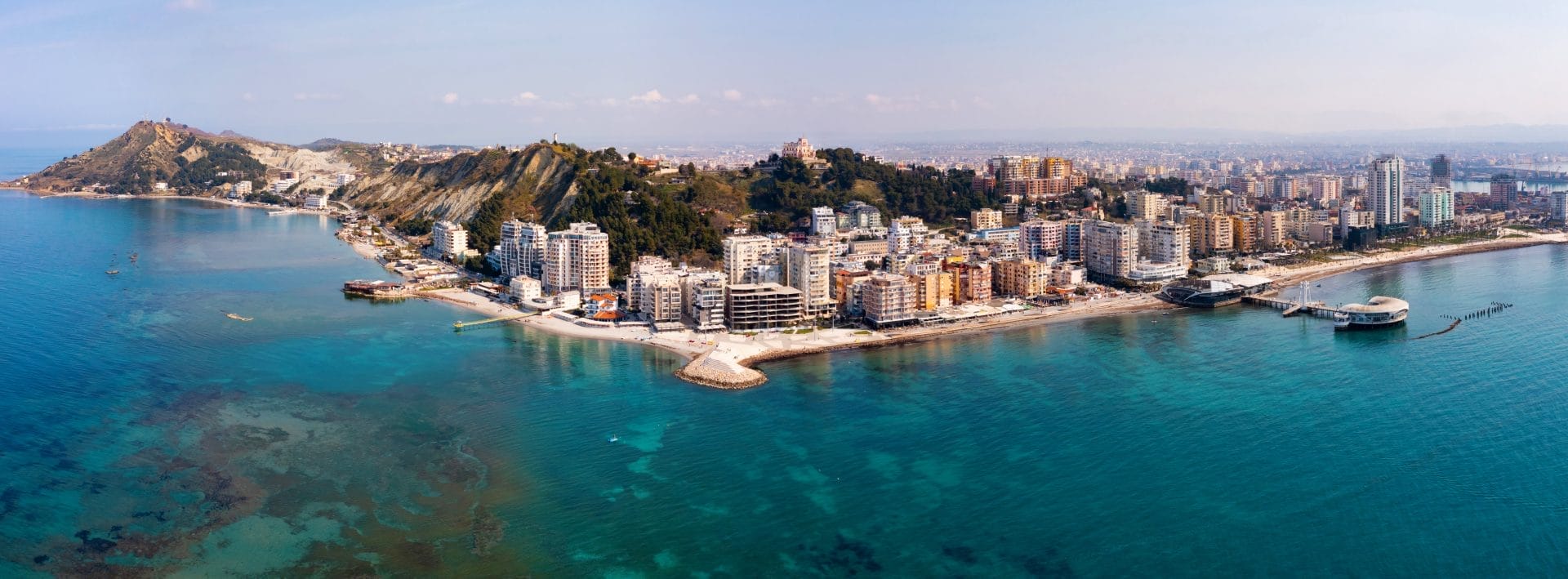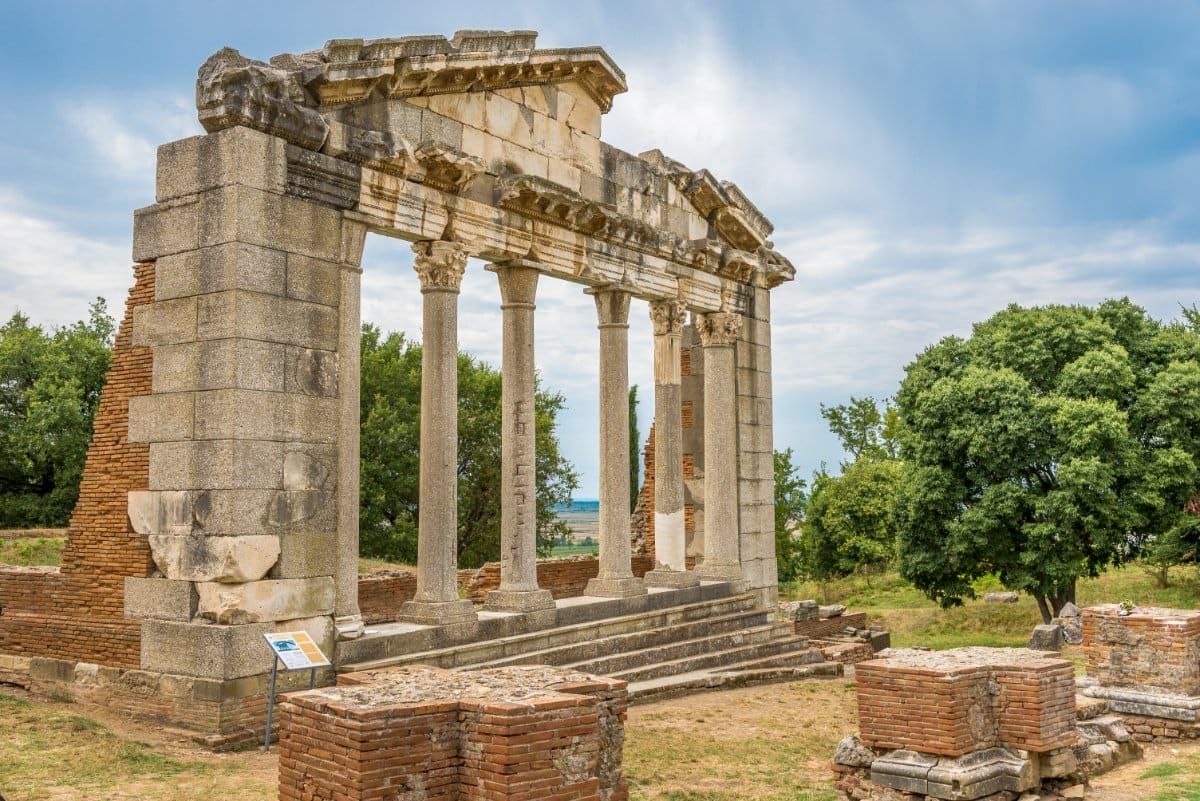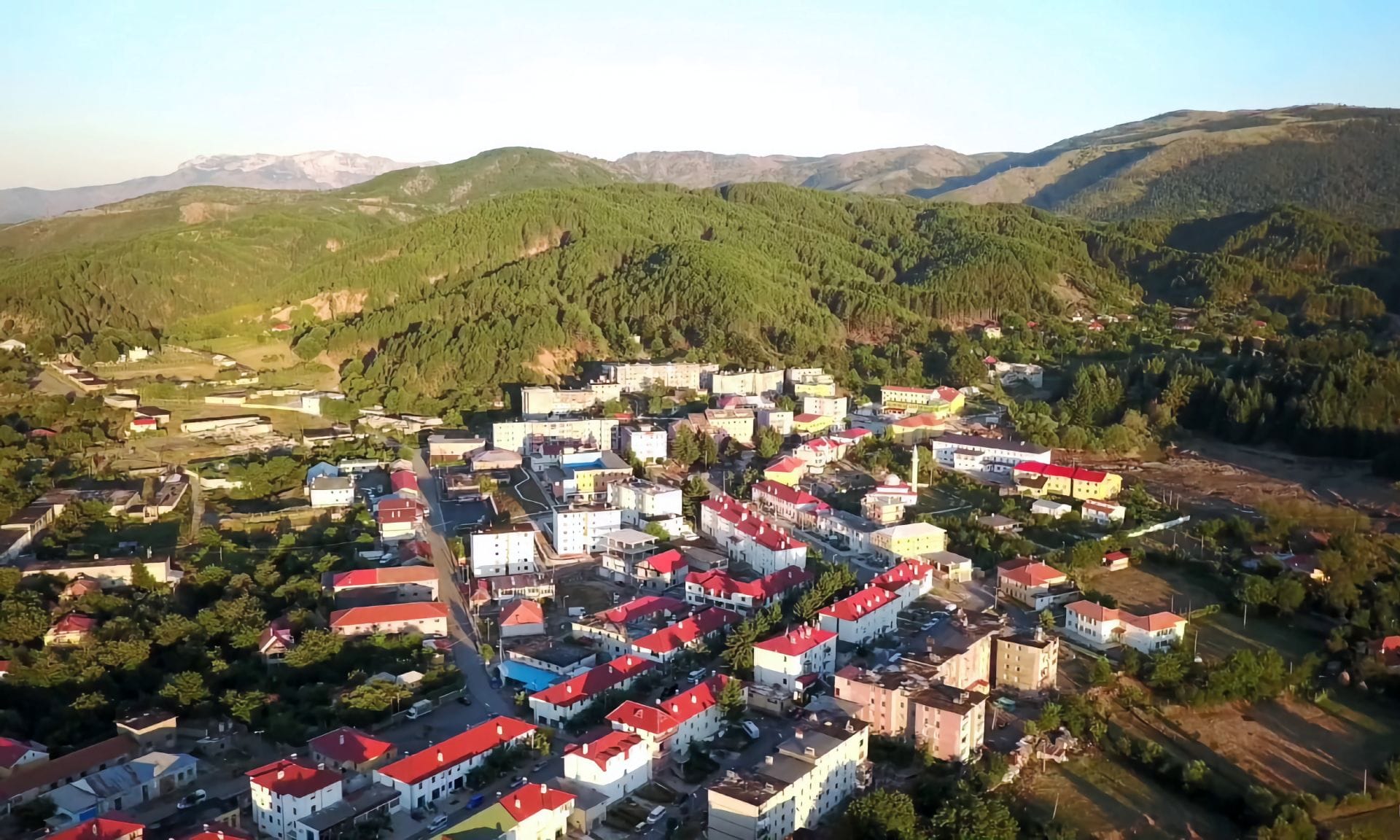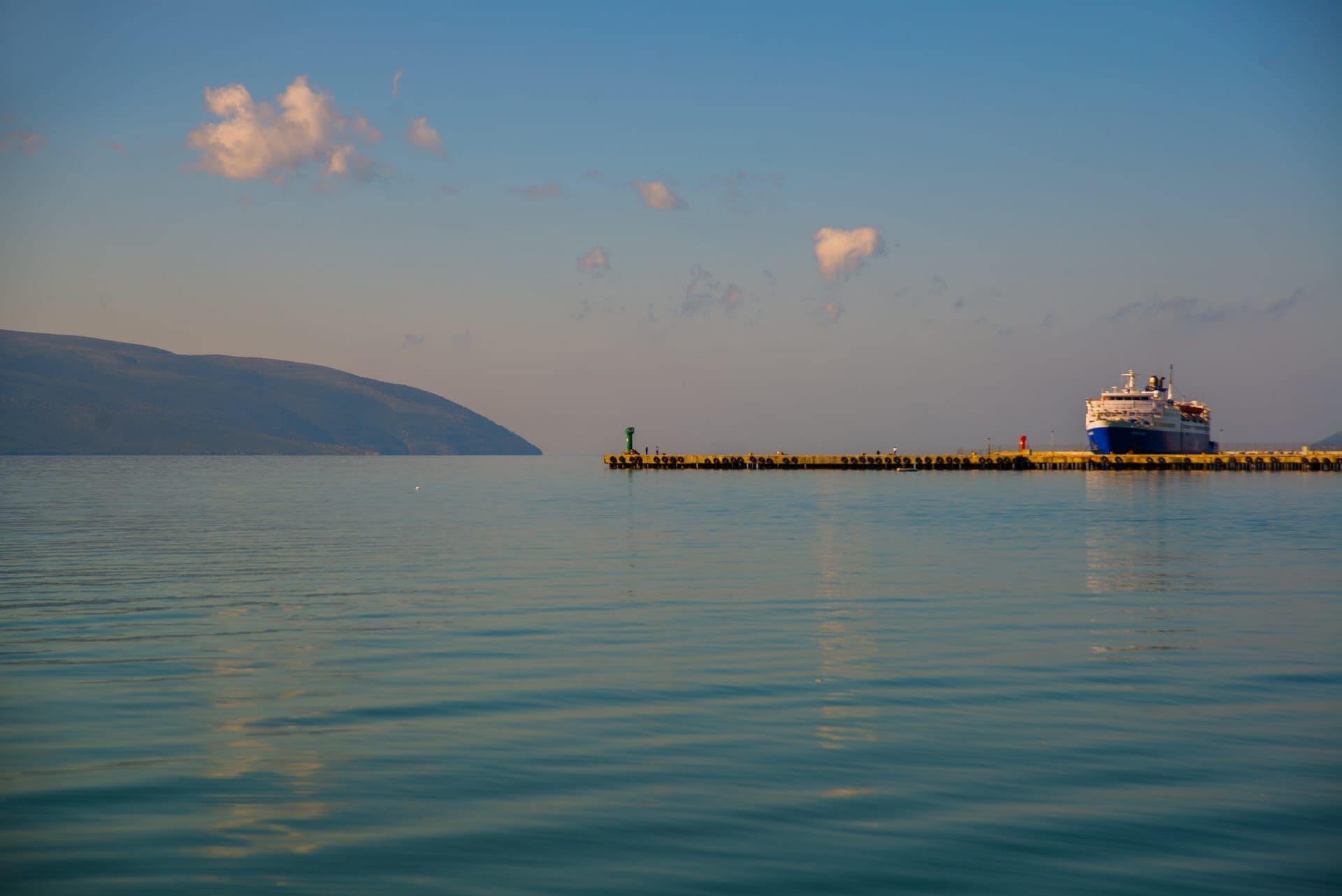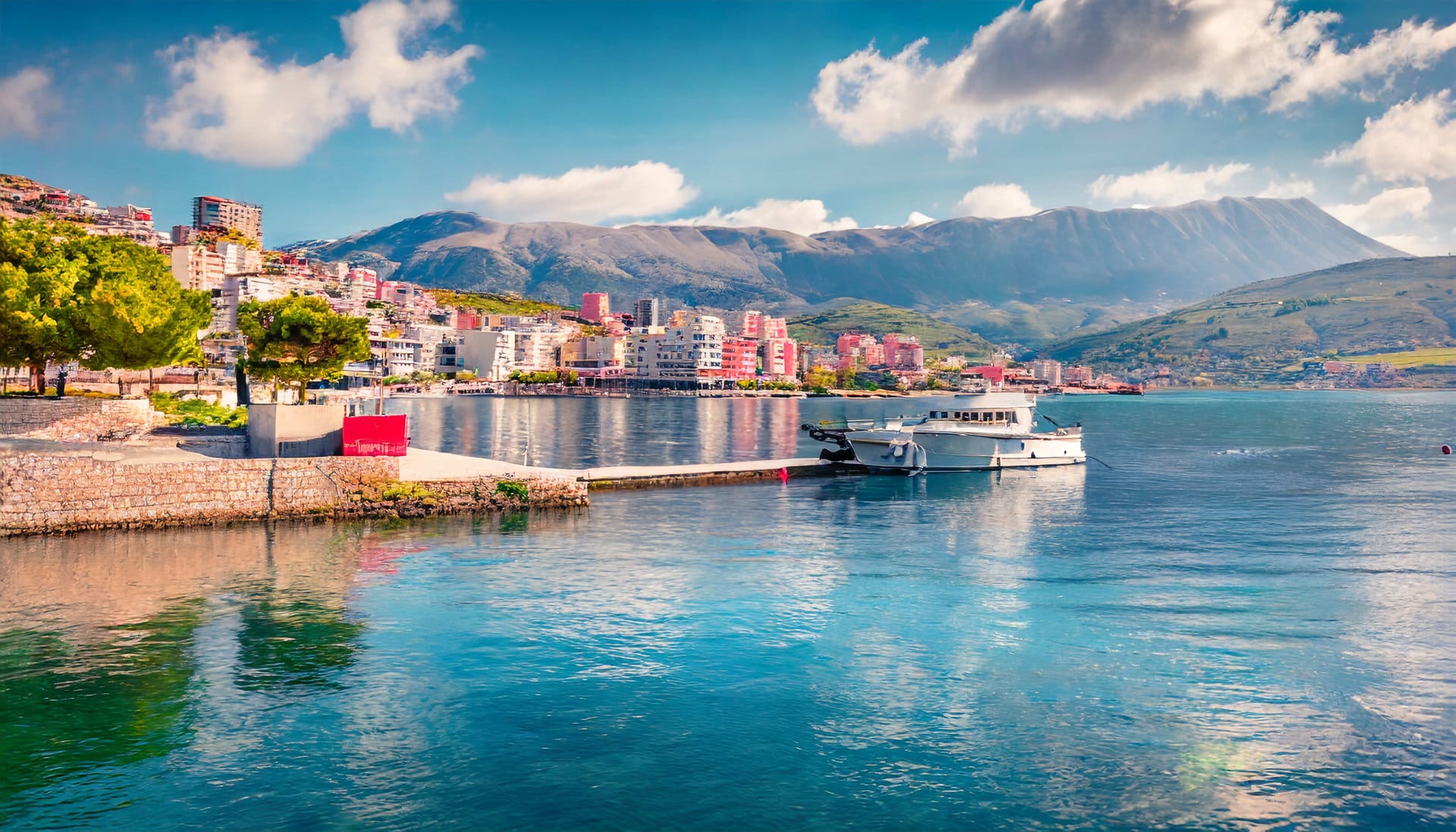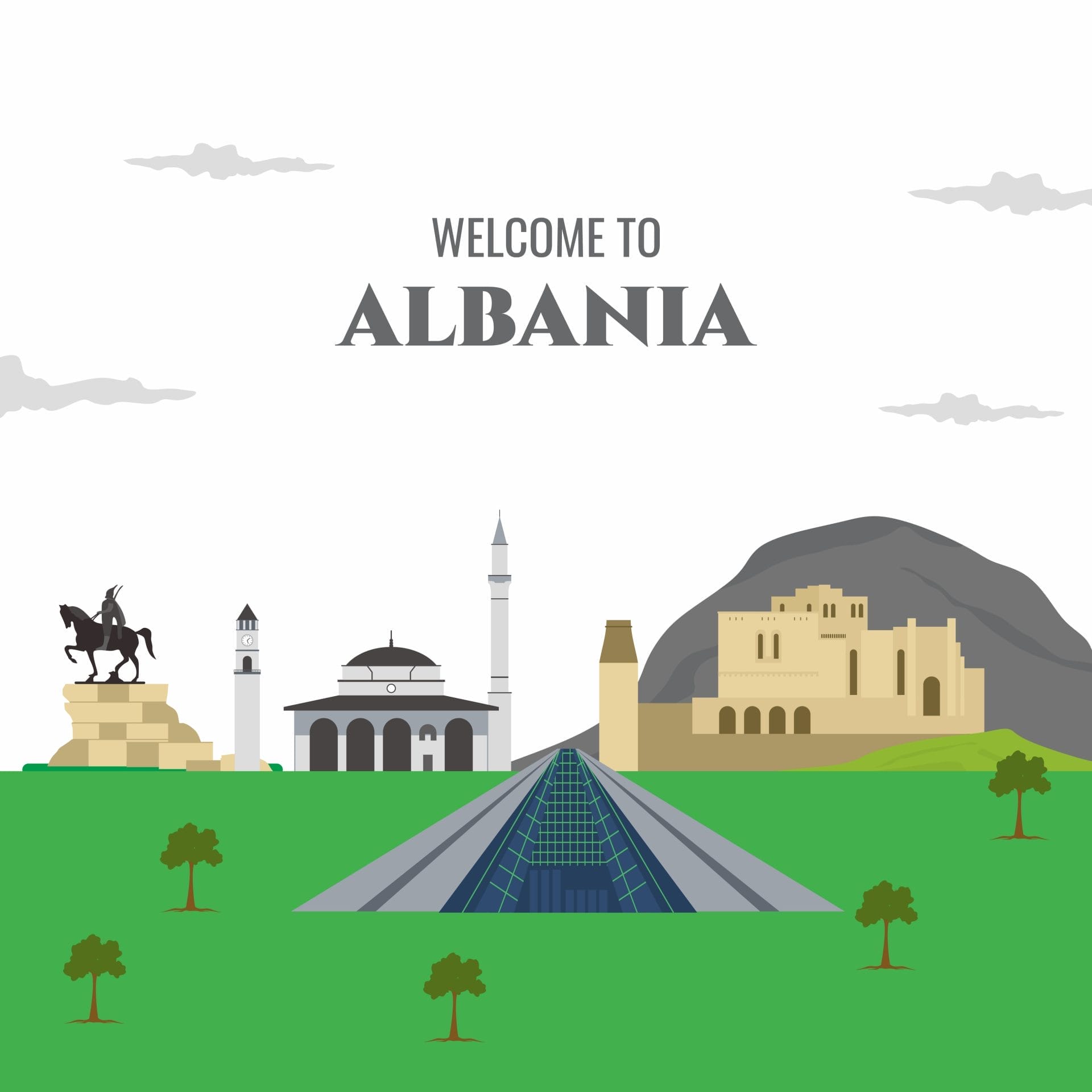
Historic Architecture
With over 158 castles and fortresses dotting its rugged landscape, Albania offers history lovers and architecture aficionados a captivating journey into the past.
The castles and fortresses of Albania provide a glimpse into the tumultuous past of invasions, sieges, and battles for control throughout Albania’s history.
Albania’s castles and fortresses are historically and culturally significant, from ancient Illyrian hill forts to medieval castles to Ottoman-era fortifications.
This article will explore some of Albania’s most magnificent and important castles and fortresses.
Krujë Castle
One of Albania’s most significant and impressive castles is Krujë Castle, located in the historic town of Krujë.
Perched atop a steep hill rising 557 meters above sea level, Krujë Castle provides sweeping views of the surrounding landscape and once controlled an important route through Albania.
The castle dates back to the 5th century AD, built as an Illyrian fortification.
Later, it expanded in the Middle Ages and achieved the greatest prominence as the center of the Albanian resistance against the Ottoman Empire, led by the legendary hero Skanderbeg in the 15th century.
Skanderbeg used the castle as his base of operations and successfully kept the Ottoman armies from fully conquering Albania for decades.
Within the sprawling castle complex covering over 5 hectares, visitors can explore Skanderbeg’s museum, exhibiting artifacts from the time period and ruins of a Byzantine-era church, mosque, and clock tower.
The outer defensive walls snake along the hill’s contours, providing a forbidding sight for potential invaders.
Krujë Castle stands as a proud monument to the spirit of Albanian independence and resilience.
Berat Castle
Berat, situated along the Osum River, is home to another majestic fortress – Berat Castle.
Known as the “City of a Thousand Windows,” Berat Castle exemplifies the unique defensive architecture and construction techniques developed in Albania over the centuries.
The castle dates back to the 4th century BC when the Illyrians built the first fortress on the site. Its strategic location on a rocky hill overlooking a river valley called for the constructing of a citadel.
Over time, the Byzantines expanded and fortified the castle in the 13th century and the Ottomans in the 15th century.
Within the castle walls, a quaint medieval town flourished with churches, mosques, houses, and other structures tightly packed together.
What makes Berat Castle so instantly recognizable are the white structures crowding the hillside, punctuated by windows of all different sizes and orientations.
These windows visually represent the fusion of Christian and Muslim architecture within the castle complex.
Visitors to Berat Castle can get lost wandering through its cobbled streets and exploring the Greek Orthodox Onufri Museum, which exhibits precious Byzantine-style iconography.
Gjirokastër Fortress
The city of Gjirokastër is like an open-air museum defined by its wealth of Ottoman-era homes, commercial buildings, churches, and, of course, its dominating fortress perched atop a hill overlooking the Drino Valley.
This formidable fortress, dating back to the 12th century, attained its current form during renovations undertaken in the early 19th century.
Its position strategically overlooking a main route through the valley demonstrates the defensive ingenuity of Albanian castle construction.
Within the fortress walls, visitors can check out the new “Cold War Tunnel,” which served as a secret bunker during the Communist era, along with the National Museum of Weapons showcasing Albania’s various armaments throughout history.
Walking along the rugged fortress walls provides beautiful views of red-tiled roofs and white limestone architecture that earned Gjirokastër the nickname “City of Stone.”
Gjirokastër Fortress remains one of the country’s top tourist attractions and architectural marvels.
Rozafa Castle
Situated high above the city of Shkodër in northern Albania stands the ancient fortress of Rozafa.
The earliest signs of fortified settlements in this strategic location date back to antiquity when the Illyrians constructed the first defensive walls.
The Romans expanded the fortifications after defeating the Illyrians in 167 BC.
The Byzantines and Venetians later controlled Rozafa before falling under Ottoman rule for five centuries.
The castle complex sprawls across the rocky slopes, containing ruins of ramparts, cisterns, terraces, and a church.
The site is named after the legendary Rozafa, who was walled into the ramparts as an offering to the gods so that the castle’s construction could be completed.
This tragic tale of sacrifice has become integral to Albanian culture and folklore.
Rozafa Castle’s strategic position overlooking two rivers and controlling key trade routes shows why it was so fiercely contested throughout history.
Today, visitors can enjoy breathtaking views from Rozafa’s ramparts and learn about the artifacts uncovered, indicating the site’s long timeline of human activity.
Bashtovë Fortress
The early 15th century Bashtovë Fortress provides a classic example of Albanian medieval military architecture.
Bashtovë served as an important defensive fortification for the Principality of Albania until it fell to the Ottomans in 1417.
The castle complex contains a variety of structures enclosed within three defensive walls.
The outermost walls protected the peasants and their livestock, while the inner walls safeguarded noble families and rulers.
Visitors can explore the ruins of a small chapel, water cisterns, and residential quarters within the walls.
Archeological excavations have uncovered ceramic vessels, cooking utensils, jewelry, armaments, and coins, providing insight into daily life at the fortress through the centuries.
The site offers awe-inspiring views over the plains below and the Adriatic Sea.
The highly strategic location of Bashtovë Fortress illustrates why control over this area was so heavily contested.
Petrelë Castle
Rising spectacularly on a rocky hill in central Albania, Petrelë Castle is a stunning example of medieval defensive architecture.
The first structures erected on the hilltop date back to Justinian I in the 6th century AD.
Later in the 14th century, Petrelë Castle was expanded and solidified by Albanian nobleman Petrela, indicating the growing importance and prosperity of the region.
The castle complex is characterized by substantial walls following the natural contours of the terrain interspersed with round towers.
Visitors can explore the ruins of a chapel, water cisterns, barracks, and noble residences within the walls.
The highest point of the castle provides panoramic views over the Erzen Valley.
Petrelë Castle was the site of major power struggles between Albanian rulers and regional nobles throughout the medieval era.
Today, the castle remains remarkably well preserved, allowing visitors to imagine scenes of medieval life at the stronghold.
Petrelë provides a glimpse into Albania’s emergence as a consolidated power during the Middle Ages.
Porto Palermo Castle
On the Ionian Sea in southern Albania, Porto Palermo Castle makes for a picturesque scene with its tidy triangular shape surrounded on three sides by azure water.
The small coastal castle just south of Himara was constructed in the early 19th century by Ali Pasha of Tepelena, the powerful Ottoman Albanian ruler.
Ali Pasha controlled a semi-autonomous territory encompassing much of southern and central Albania.
Within the compact triangular walls, visitors can tour Ali Pasha’s small private hammam along with British-constructed bunkers and tunnels from the Second World War when the area was occupied.
The scenic pebble beach outside the castle walls provides a pleasant place for swimming and sunbathing with the castle looming above.
Porto Palermo also features a 19th-century Orthodox Church. The castle remains a popular tourist attraction along the Albanian Riviera.
Prezë Castle
Found atop a commanding hill in south-central Albania, Prezë Castle was constructed in the second half of the 14th century as a stronghold for the Thopia family, who ruled over the area.
The Thopia were one of the Late Middle Ages’s most powerful Albanian feudal families, controlling a territory focused around the inland town of Berat.
The fortified castle complex follows an irregular oval layout with round towers offering visibility across the landscape.
Within the roughly one-meter-thick defensive walls, the ruins of a small Byzantine church and watchtowers are still visible today.
Fine pottery artifacts and metal weapons have been unearthed at the site.
Prezë Castle was one of several strongholds owned by the Thopia dynasty used to exert control and amass wealth from the territory.
The castle changed hands several times before ultimately falling into Ottoman hands for good in the 15th century.
Exploring Prezë Castle provides insight into the political dynamics between competing Albanian noble families during the Late Middle Ages as they attempted to gain power and autonomy.
Lëkurësi Castle
Found along the Albanian Riviera in the southernmost region of the country sits Lëkurësi Castle, strategically positioned overlooking Sarandë Bay.
The castle was constructed in 1537 during the Ottoman Empire’s southward expansion under Sultan Suleiman the Magnificent.
The aim was to establish a stronghold from which the Ottomans could launch naval attacks against Western powers based across the straits in Corfu and southern Italy.
Lëkurësi Castle has a tidy rectangular-shaped design with imposing high walls and several towers at the corners.
Within the walls, structures were built for military functions, including a mosque, water cisterns, barracks, and gunpowder storage rooms.
Archeological excavations have uncovered portions of a secret tunnel system, ceramic vessels, jewelry, and coins.
Other nearby attractions include the ruins of the ancient city of Butrint just two miles south, which also came under Ottoman control around the same time the Lëkurësi Fortress was built.
The striking hillside location and expansive Mediterranean views make Lëkurësi Castle a great scenic destination along Albania’s rugged southern coastline.
Rodoni Castle
On a peninsula jutting out into the Adriatic Sea north of Durrës stands the windswept ruins of Rodoni Castle.
Rodoni originates from ancient times when the Illyrians constructed the first walls and towers during the 4th century BCE.
The castle occupies a highly strategic position overlooking a main sea channel.
The Romans, Byzantines, and Venetians occupied and refortified the castle throughout different eras.
The core elements of the castle complex include a triangular keep with imposing 50-foot walls and several defensive towers added by the Venetians in the 16th century.
Sections of the exterior walls and towers are still intact, showcasing various architectural styles reflecting the site’s complex, layered history.
Archeological excavations have revealed Illyrian fortification walls and evidence of early Christian activity.
Rodoni Castle is situated in one of Albania’s most hotly contested regions near the port city of Durrës.
Controlling passage through the straits was a priority for regional powers throughout history.
Visitors can explore the rugged ruins and take in views of the sea channel that was so heavily fought over.
Lezhë Castle
Found in the ancient town of Lezhë in northwest Albania, the first foundations of Lezhë Castle were built as an Illyrian hill fort settlement as far back as the 8th century BCE.
The strategic value of the site overlooking hilly terrain and the Drin River Valley made it an ideal spot for a citadel.
The fortifications were later expanded substantially under the rule of the Byzantine Empire in the Middle Ages and termed the “Red Castle.”
Within the sprawling castle walls, visitors can view the medieval church ruins and defensive walls snaking along the rugged contours of the hill.
Archeological digs have uncovered tombs, housing structures, water cisterns, tiles, and ceramics, shedding light on over two thousand years of habitation at the site.
The castle’s sheer size and scale reflect Lezhë’s political importance during the Middle Ages as a center of power and commerce.
Over the centuries, possession of Lezhë Castle was contested by the Byzantines, Venetians, Bulgarians, Normans, and Ottomans until the ultimate Ottoman triumph.
Today, visitors can take in the sweeping views from the hilltop castle as they reflect on Lezhë’s strategic value that led generations of powers to fight for its control.
Kaninë Castle
Found dramatically on a remote hilltop in southwestern Albania, Kaninë Castle is a majestic medieval-era fortress offering incredible vistas over the Vlorë region and the Adriatic Sea.
Kaninë Castle was built in the 6th century during the reign of the Byzantine Emperor Justinian I.
Its elevated position provided military-strategic advantages and visibility over the surrounding territory.
The castle complex follows an irregular oval shape with imposing defensive walls and towers occupying the highest sections of the rocky hill.
Inside the castle walls, archeologists have uncovered water cisterns, ceramic fragments, and ruins of a small Byzantine church and housing structures.
Kaninë Castle represented a crucial stronghold for controlling the Vlorë region and access to the Adriatic.
Over the centuries, the castle changed hands between the Byzantines, Bulgarians, Venetians, and Ottomans, each undertaking renovations and enhancements.
The castle remains remarkably intact today, offering visitors panoramic sea views from its windswept ruins.
Kaninë Castle’s rugged natural beauty and rich history make it one of Albania’s must-see fortifications.
Elbasan Castle
The medieval fortress perimeter walls engulfing the historic city of Elbasan in central Albania rank as one of the largest castle complexes in southeastern Europe, encompassing over 25 hectares.
Elbasan Castle was originally constructed during the Middle Ages after the area fell under Byzantine control following attacks by Bulgarian and Norman forces intent on controlling the region.
The massive crenelated walls protected Elbasan, which became an important trading and military outpost.
Within the walls, generations of houses, churches, mosques, marketplaces, and streets have been constructed alongside the ruins of ancient towers and fortifications.
The castle walls have largely dictated the layout of the sprawling city, which has thrived inside its protective embrace.
Visitors to Elbasan can walk sections of the expansive castle walls as they take in views overlooking the Shkumbin River Valley.
Elbasan Castle represents a prime example of how Albanian cities were heavily fortified for defensive purposes during the medieval period.
These defensive efforts allowed Elbasan to develop into a prosperous cultural and economic hub.
Other Notable Castles Across Albania
In addition to the major castles and fortresses discussed earlier, Albania contains numerous other strongholds and fortifications worth exploring to appreciate the country’s rich military architectural heritage fully.
These additional castles and forts are more modest, but their ruins continue to evoke imaginings of Albania’s dynamic past.
The castles feature a range of construction styles and defensive designs reflecting the various occupiers that controlled the region over the centuries.
From ancient Illyrian hill settlements to Orthodox castles to Ottoman fortifications, these other remarkable fortresses demonstrate Albania’s strategic geographical position at the crossroads of history and empires.
Vlora Castle – This large medieval castle complex in the coastal city of Vlorë was built in the 14th century. Its sprawling walls contain ruins of housing structures, water cisterns, and several Orthodox churches.
Venetian Triangular Castle – A small 16th-century fortification built by the Venetians near the port of Durrës. Its distinctive triangular shape with round towers made it easy to defend.
Dajti Castle – Ruins of a 13th-century castle on a strategic mountain pass overlooking Tirana. It was an important military fortification for controlling access to the central region.
Dorëzi Fortress – A ruined Illyrian-era hill settlement dating back to the 4th century BCE. Located in southeast Albania, it offers panoramic mountain views.
Drisht Castle – Situated in northern Albania, this mountaintop castle dates back to the early Middle Ages. With its high elevation, Drisht Castle provided visibility across the surrounding terrain.
Kardhiq Castle – A small ruined Ottoman-era fortress near Kavajë in west-central Albania, Kardhiq Castle features remnants of towers, walls, and a mosque.
Kratul Fortification – Prehistoric fortified walls built by the Illyrians circa 2000 BCE. The dry stone defensive walls followed the contours of the hill.
Margëlliç Castle – A ruined medieval fortress located atop a hill in southeast Albania, originally built in the 5th century. The walls and corner towers are still partially intact.
Paleokastra Castle – Located in southwestern Albania, this imposing castle was built in the 14th century on a rocky hill with steep cliffs on three sides. Remains of housing structures and a church exist within the walls.
Peqin Castle – Situated on a cliff above Peqin, this triangular castle has Byzantine origins dating to the 6th century AD. Its towers were rebuilt in the 19th century.
Persqopi Castle – Constructed in the 13th century, this fortified citadel near Pogradec overlooks the scenic Ohrid Lake. Its walls and towers have been well preserved.
Tirana Fortress – Built in the early 16th century, the fortress protected the growing town of Tirana. Sections of the high stone walls, towers, and gates still stand today.
Gjon Boçari Castle – A ruined hilltop fortress near Sarandë built in the early 19th century by Ali Pasha of Ioannina to control the strategic coastal area.
Tujani Castle – Located in central Albania, this castle overlooking the Shkumbin River Valley has origins dating back to the Bronze Age. It was rebuilt in the 18th century.
Vokopolë Castle – Constructed in the 4th century BCE, this ancient Illyrian hill settlement in southwest Albania has remnants of cyclopic defensive walls.
Kelcyre Castle – A small medieval fortress strategically located on a rocky outcrop overlooking the Vjosa River in southern Albania.
Peca Castle – Situated near the Macedonian border, this badly damaged castle dates to the late Middle Ages. Its walls and two towers are still partially intact.
Your Turn to Visit
Albania offers an incredibly rich and diverse collection of historic castles and fortresses, from ancient Illyrian hill settlements to medieval citadels to Ottoman-era fortifications.
These numerous strongholds scatter the rugged Albanian landscape and provide an important glimpse into the past occupations, battles, and power dynamics over the territory.
The strategic locations chosen for castle and fortress construction and innovative defensive architectural techniques demonstrate Albanian ingenuity and perseverance despite its contentious history of invasion and unrest.
Albania’s castles and fortresses now serve as conduits to the past, allowing visitors to imagine the events and daily life that transpired within their walls over two thousand years of history.
They provide both scenic beauty and cultural enlightenment.

